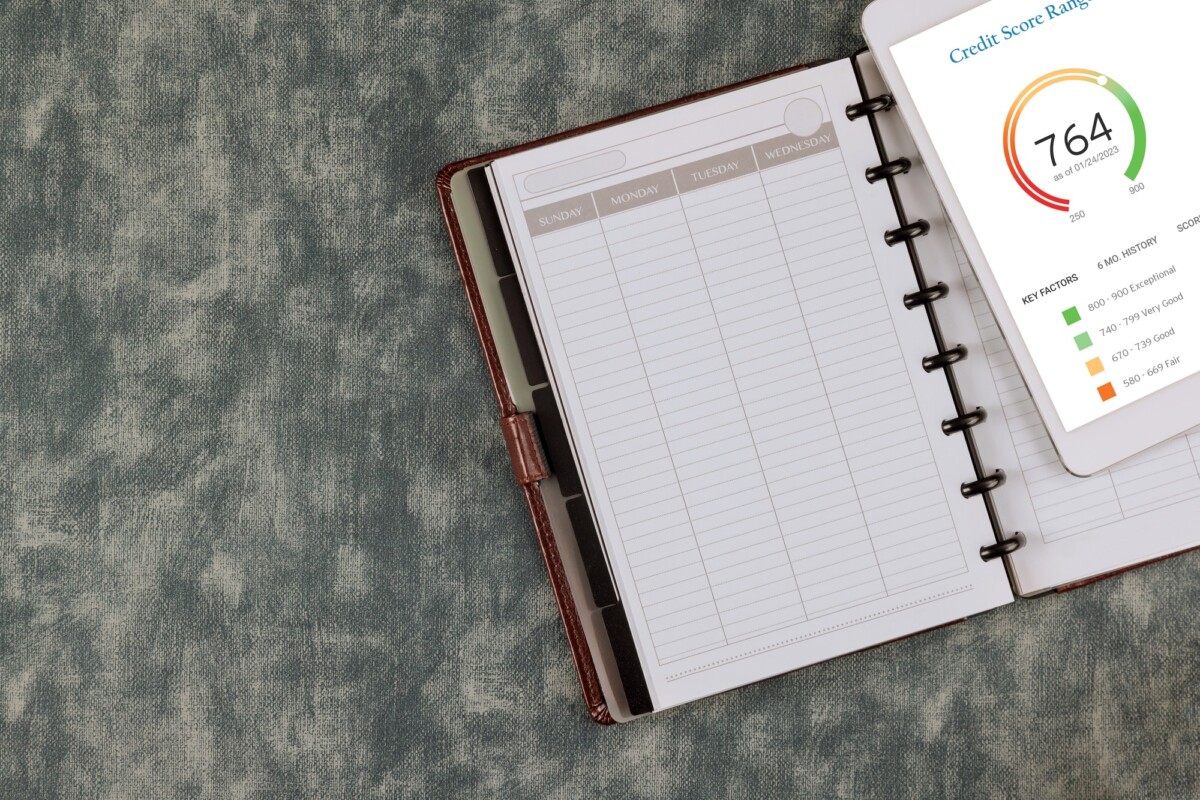The Trusted Choice for Cash Loans
Request Your Cash Advance or Personal Loan Now
The Trusted Choice for Cash Loans
Submit your information today!
Get lender-approved in as fast as 5 min!
Receive a decision as soon as the next business day!
Fast Funding
Get money as soon as the next business day

How to Refinance a Personal Loan: A Step-by-Step Guide
Understanding the Basics of Personal Loan Refinancing
Personal loan refinancing might sound complicated, but it’s quite simple. When you refinance a personal loan, you take out a new loan to pay off your existing one. This new loan usually comes with better terms, like a lower interest rate or a longer repayment period. This can help you save money and manage your monthly payments more easily. To understand how to refinance a personal loan, you need to know the key steps involved.
First, check your current loan details, like the interest rate and remaining balance. Next, shop around for lenders offering better terms. Compare their offers carefully. Once you find a suitable option, apply for the new loan and use it to pay off your old one. It’s that simple!
Refinancing can be a smart move if done right. It can lower your monthly payments and reduce the total interest you pay over time. Plus, it can help you pay off your debt faster. However, make sure to consider any fees or penalties for early repayment. By understanding the basics, you can make an informed decision and take control of your finances with ease.
Key Benefits of Refinancing Your Personal Loan
Refinancing your personal loan can bring many benefits. First, you might get a lower interest rate. This can save you money over time. If you have improved your credit score, lenders may offer you better rates. Lower rates mean lower monthly payments. This can free up cash for other needs. Second, refinancing can help you consolidate debt. If you have multiple loans, combining them into one can simplify your finances. You will have only one payment to manage each month. This can reduce stress and make budgeting easier. Plus, you might get a better rate on the new loan. Lastly, refinancing can extend your loan term. This can lower your monthly payments even more.
While you might pay more in interest over time, it can make payments more manageable now. Learning how to refinance a personal loan can be a great way to improve your financial health. So, consider your options and choose what works best for you. Refinancing your personal loan can bring many benefits. First, you might get a lower interest rate. This can save you money over time. If you have improved your credit score, lenders may offer you better rates. Lower rates mean lower monthly payments. This can free up cash for other needs. Second, refinancing can help you consolidate debt.
When Is the Right Time to Refinance a Personal Loan?
Timing is everything when it comes to refinancing a personal loan. So, when is the right time to refinance a personal loan? First, consider refinancing if interest rates have dropped. Lower rates can save you money over the life of your loan. Also, if your credit score has improved, you might qualify for better terms. This could mean lower monthly payments or a shorter loan term.
Next, think about refinancing if your financial situation has changed. Maybe you’ve received a raise or paid off other debts. These changes can make it easier to manage a new loan. Additionally, if you need to free up cash for an emergency or a big purchase, refinancing could help. Always weigh the pros and cons before making a decision. Lastly, keep an eye on your loan’s terms and conditions.
If your current loan has high fees or penalties, refinancing might be a smart move. Look for a loan with more favorable terms. This can make a big difference in your overall financial health. Remember, knowing how to refinance a personal loan can lead to significant savings and financial flexibility.
Steps to Take Before Refinancing Your Personal Loan
Before you dive into how to refinance a personal loan, first, check your credit score. A better score can get you a lower interest rate. Next, gather all necessary documents like your current loan agreement and income proof. This helps streamline the process. Also, review your current loan terms to understand any prepayment penalties. This way, you avoid surprises later. Next, compare different lenders. Look for better interest rates and terms. Use online tools to get multiple quotes. This helps you find the best deal. Additionally, read reviews to see what other customers say about their experiences. A lender with good reviews is often a safer bet. Finally, calculate the total cost of refinancing. Include fees and closing costs.
This ensures you save money in the long run. Then, submit your application with all required documents. Follow up with the lender to ensure everything is on track. Once approved, celebrate your new, improved loan terms! Before you dive into how to refinance a personal loan, first, check your credit score. A better score can get you a lower interest rate. Next, gather all necessary documents like your current loan agreement and income proof. This helps streamline the process.
Additionally, read reviews to see what other customers say about their experiences. A lender with good reviews is often a safer bet. Finally, calculate the total cost of refinancing. Include fees and closing costs. This ensures you save money in the long run. Then, submit your application with all required documents. Follow up with the lender to ensure everything is on track. Once approved, celebrate your new, improved loan terms! Remember to stay organized. Keep all your documents in one place. This makes the process smoother. Plus, it reduces stress. Happy refinancing!
How to Compare Different Refinancing Offers
To start, gather all the offers you can find. This helps you see what’s out there. Look at the interest rates first. Lower rates save you money over time. Also, check the loan terms. Shorter terms mean higher payments but less interest. Longer terms mean lower payments but more interest. Next, consider any fees involved. Some lenders charge origination fees or prepayment penalties. These can add up fast. So, always read the fine print. Compare these fees across all offers. This way, you know the true cost of each loan. Also, see if the lender offers any perks. Some might offer rate discounts for automatic payments. Finally, think about customer service.
You want a lender who is easy to reach. Check online reviews to see what others say. Good customer service can make a big difference. It’s important to feel comfortable with your lender. Once you have all this info, you’ll know how to refinance a personal loan with confidence. Happy refinancing! To start, gather all the offers you can find. This helps you see what’s out there. Look at the interest rates first. Lower rates save you money over time. Also, check the loan terms. Shorter terms mean higher payments but less interest. Longer terms mean lower payments but more interest. Next, consider any fees involved. Some lenders charge origination fees or prepayment penalties. These can add up fast.
The Application Process for Refinancing a Personal Loan
Ready to learn how to refinance a personal loan? Great! The first step is to gather all your financial documents. You will need your current loan details, income proof, and credit score. This helps lenders assess your eligibility. Next, shop around for the best rates. Compare offers from different lenders to find the most favorable terms.
Use online tools to make this process easier. Once you have chosen a lender, it’s time to apply. Fill out the application form with your personal and financial information. Double-check for any errors to avoid delays. Submit the required documents along with your application. Some lenders may ask for additional information, so be prepared. The approval process can take a few days to a couple of weeks.
After approval, review the loan agreement carefully. Make sure you understand the terms and conditions. Ask questions if something is unclear. Once satisfied, sign the agreement to finalize the refinancing. The new lender will pay off your old loan. Now, you can enjoy lower monthly payments or better interest rates. Congratulations, you’ve successfully learned how to refinance a personal loan!
Common Mistakes to Avoid When Refinancing
Refinancing a personal loan can be a smart move, but watch out for common mistakes. One big error is not shopping around for the best rates. Many people stick with their current lender, missing out on better deals. Always compare offers from multiple lenders to find the best terms. Also, consider the fees involved. Some lenders charge high fees that can negate any savings from a lower interest rate. So, read the fine print and calculate the total cost before making a decision.
Another mistake is not checking your credit score before applying. Your credit score plays a huge role in the interest rate you receive. A low score can lead to higher rates, making refinancing less beneficial. Therefore, check your credit report and fix any errors before applying. Additionally, avoid applying for multiple loans at once. Each application can ding your credit score, making it harder to get a good rate. Focus on one application at a time to keep your score intact.
Lastly, don’t extend your loan term unnecessarily. While a longer term can lower your monthly payments, it can also increase the total interest paid over the life of the loan. Stick to a term that balances manageable payments with minimal interest. Moreover, don’t ignore the reason you needed to refinance in the first place. If you’re struggling with debt, refinancing alone won’t solve the problem. Create a budget and stick to it to avoid falling into the same trap. By steering clear of these mistakes, you’ll be well on your way to learning how to refinance a personal loan successfully.
How to Improve Your Chances of Approval
Improving your chances of approval when you refinance a personal loan doesn’t have to be hard. First, check your credit score. A higher score can make a big difference. Lenders prefer borrowers who have a good credit history. So, try to pay off any outstanding debts and avoid late payments. This will boost your score and make you more attractive to lenders. Next, gather all necessary documents before applying. These include proof of income, bank statements, and any other financial records.
Being organized shows lenders that you are responsible. It also speeds up the process. Plus, it reduces the chances of any delays or complications. Remember, the more prepared you are, the smoother the process will be. Lastly, shop around for the best rates. Different lenders offer different terms. Compare them to find the best deal. Use online tools to make this easier.
By doing this, you can ensure you get the best rate possible. This step can save you a lot of money in the long run. So, take your time and choose wisely. Stay positive and patient throughout the process. Seek advice from financial experts if needed. Regularly review your credit report for errors. Keep all your financial information up to date. Consider a co-signer to improve your chances.
What to Do After Refinancing Your Personal Loan
Congratulations on successfully completing the process of how to refinance a personal loan! Now that you have a new loan, it’s time to make the most of it. First, set up automatic payments. This ensures you never miss a due date and helps you avoid late fees. Also, automatic payments can sometimes qualify you for a discount on your interest rate. Next, revisit your budget. With a new loan, your monthly payments may have changed.
Adjust your budget to reflect these new payments. This will help you stay on track and manage your finances better. If you have any extra funds, consider making additional payments to pay off your loan faster. Finally, monitor your credit score regularly. Refinancing can impact your credit score, so keep an eye on it. Look for any errors and report them immediately. By staying proactive, you can maintain or even improve your credit score over time.
Enjoy the benefits of your refinanced loan and the financial freedom it brings! Don’t forget to review your loan terms periodically. This helps you stay informed about your obligations. Consider setting financial goals. This can motivate you to manage your loan and other finances effectively. Celebrate milestones. Paying off chunks of your loan is an achievement worth acknowledging.
Frequently Asked Questions About Personal Loan Refinancing
Are you curious about how to refinance a personal loan? You’re in the right place! Many people want to know if refinancing a personal loan can save them money. The answer is yes! By securing a lower interest rate, you can reduce your monthly payments. This process can also help you pay off your loan faster. Plus, it might improve your credit score over time.
Another common question is about the steps involved. First, check your credit score to see if you qualify for better rates. Next, research and compare different lenders. Then, gather your financial documents and submit your application. Once approved, use the new loan to pay off the old one. It’s that simple! People also wonder if there are any risks.
While refinancing can be beneficial, it’s important to consider the fees involved. Some lenders charge origination fees or prepayment penalties. Make sure to read the fine print before making a decision. By understanding the terms, you can make the best choice for your financial future. Refinancing can save you money! Check your credit score first. Watch out for fees.
Choosing ExpressCash means opting for a personal loan experience that is fast, flexible, and focused on your needs.




